How to De Winterize an Outboard Motor (2-vs-4-Stroke)
As the weather warms up and the boating season approaches, it's time to de-winterize your outboard motor and prepare it for the water. This process can vary depending on whether you have a 2-stroke or 4-stroke motor. In this article, we'll take time to properly de-winterize your outboard motor, so you can ensure that it's running smoothly and ready for a season of boating fun.
A 2-stroke outboard motor requires changing the gear oil and checking the spark plugs, while 4-stroke outboard motors require changing the oil and oil filter, charging and reinstalling the battery, and securing all electrical connections. Also, a 2-stroke outboard motor requires flushing the motor with fresh water.
When winterizing an outboard motor, you may encounter some common issues like fuel system leaks, old spark plugs, dirty oil, and damaged propellers. Let's learn how to avoid these issues and keep your motor running smoothly.
Summary
- When de-winterizing an outboard motor, you may encounter some challenges, such as fuel system issues, spark plug issues, battery issues, oil issues, and propeller issues.
- A 2-stroke outboard motor requires checking the spark plugs and changing the gear oil, which is not required for a 4-stroke outboard motor.
- A 4-stroke outboard motor requires changing the oil and oil filter, charging and reinstalling the battery, and securing electrical connections, which are not required for a 2-stroke outboard motor.
- You can experience fuel system issues when de-winterizing a 2-stroke motor, and some symptoms that manifest this include difficulty starting, rough running, or stalling.
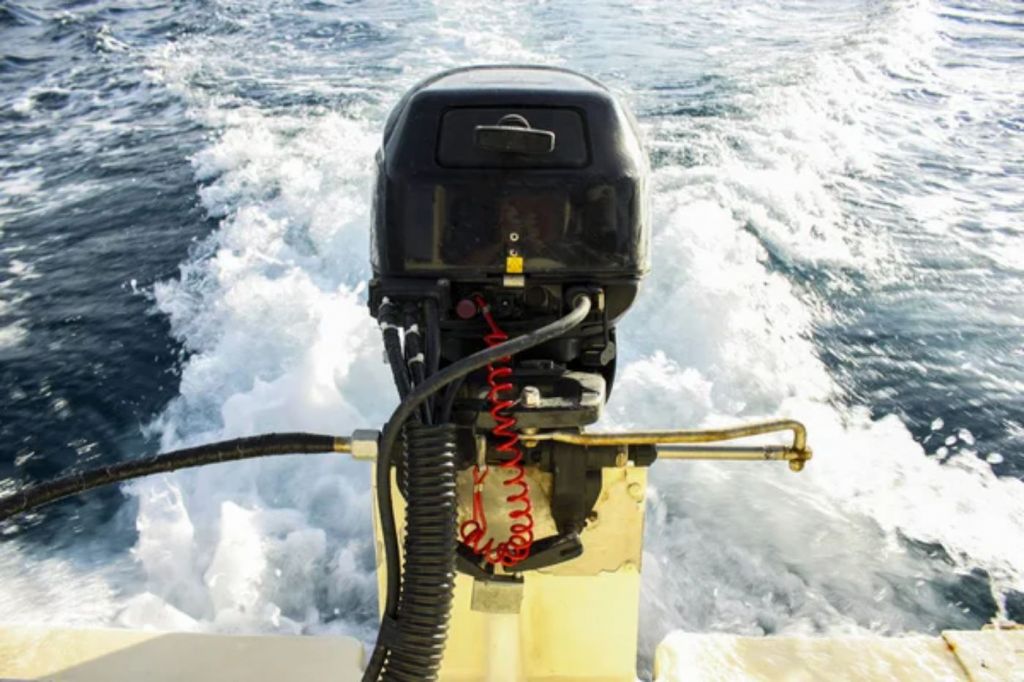
On this page:
De-Winterizing An Outboard Motor (2-vs-4-Stroke)
The table below shows the difference in the process of de-winterizing a 2-stroke and 4-stroke outboard motor:
| De-winterizing Process | 2-Stroke Outboard Motor | 4-Stroke Outboard Motor |
|---|---|---|
| Check fuel system | ✔️ | ✔️ |
| Change oil/gear oil | Gear oil | Oil and oil filter |
| Check spark plugs | ✔️ | ❌ |
| Flush motor with fresh water | ✔️ | ❌ |
| Inspect cooling system | ✔️ | ✔️ |
| Charge and reinstall battery | ❌ | ✔️ |
| Secure electrical connections | ❌ | ✔️ |
For 2-stroke outboard motors, de-winterizing involves checking the fuel system, changing the gear oil, and checking the spark plugs. You'll also need to flush the motor with fresh water and make sure the cooling system is working properly.
On the other hand, de-winterizing a 4-stroke outboard motor involves changing the oil and oil filter, checking the fuel system, and inspecting the cooling system. You'll also need to charge and reinstall the battery and make sure all electrical connections are secure.
The general guideline for de-winterizing an outboard motor includes the following steps:
Step#1: Fill the fuel tank and add the fuel stabilizer
Fill the fuel tank to prevent moisture buildup and add a fuel stabilizer to the tank. Moisture buildup in the fuel tank can lead to corrosion and fuel system damage. Filling the tank with fuel and adding a fuel stabilizer will help prevent moisture buildup and protect the fuel system from damage.
Step#2: Change the oil and oil filter
Changing the oil and oil filter before storing the motor for the winter will help prevent contaminants from building up in the engine and causing damage. Fresh oil will also provide better protection against rust and corrosion.
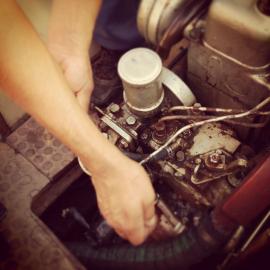
How Much Does a Boat Engine Oil Change Cost?
Step#3: Flush the motor with fresh water
Flushing the motor with fresh water will help remove any salt or debris that may have accumulated in the cooling system or other parts of the motor. This will help prevent corrosion and damage to the motor.
Step#4: Disconnect the fuel line and run the motor
Disconnect the fuel line and run the motor until it stalls to empty the carburetor and fuel lines. Emptying the carburetor and fuel lines will help prevent fuel from gumming up and causing damage to the fuel system over the winter.
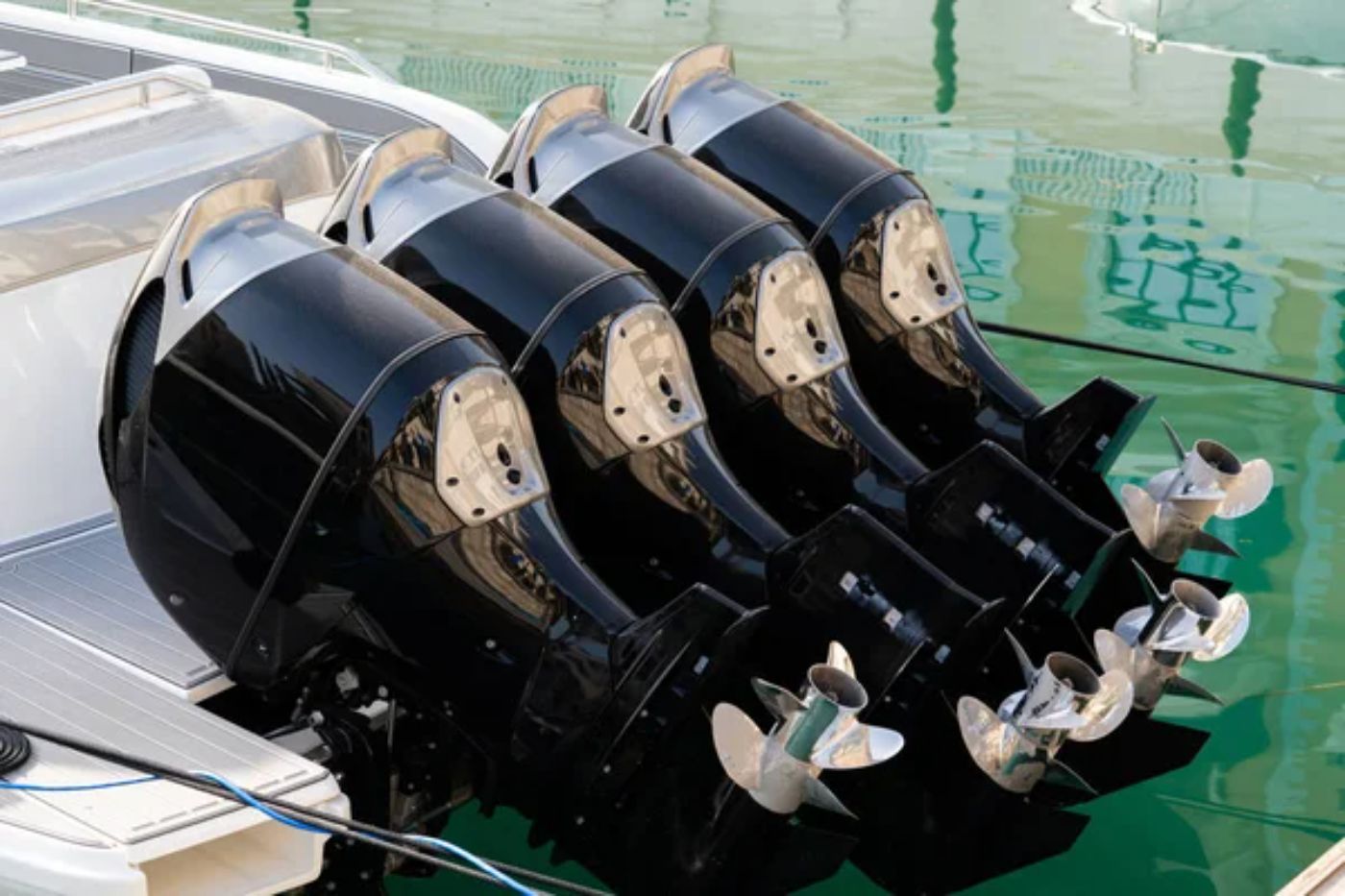
Step#5: Remove the spark plugs and spray fogging oil
Remove the spark plugs and spray fogging oil into the cylinders to prevent rust and corrosion. Spraying fogging oil into the cylinders will help prevent rust and corrosion from forming on the internal parts of the engine over the winter.
Step#6: Grease all fittings and moving parts
Grease all fittings and moving parts to prevent corrosion and rust buildup: Applying grease to all fittings and moving parts will help prevent corrosion and rust buildup on these parts over the winter.
Step#7: Drain and refill the gear oil
Draining and refilling the gear oil will help prevent contaminants from building up in the gear case and causing damage. Fresh gear oil will also provide better protection against rust and corrosion.
Step#8: Remove the battery and store it in a cool, dry place
Removing the battery and storing it in a cool, dry place will help prevent the battery from freezing and losing its charge over the winter.
Step#9: Cover the motor with a waterproof cover
Covering the motor with a waterproof cover will help protect it from rain, snow, and other elements that can cause damage over the winter.
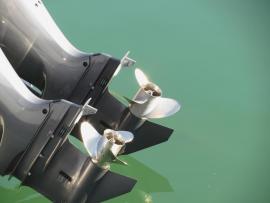
Do You Have to Winterize an Outboard Motor? (2-Stroke vs. 4-Stroke)
De-Winterizing Your 2-Stroke Outboard Motor
Here's what you need to know to get your 2-stroke outboard motor up and running again:
Step-by-step guide to de-winterize a 2-stroke motor
- Check the fuel system for any leaks or damage. Replace any damaged parts.
- Add a fuel stabilizer to the fuel tank and run the motor for a few minutes to circulate the stabilizer through the system.
- Drain the fuel tank and fuel lines completely.
- Remove the spark plugs and spray fogging oil into each cylinder to prevent rust and corrosion.
- Change the gear oil in the lower unit.
- Flush the motor with fresh water to remove any salt or debris.
- Inspect the cooling system for any leaks or damage. Replace any damaged parts.
- Remove the battery and store it in a cool, dry place.
- Cover the motor with a waterproof cover.
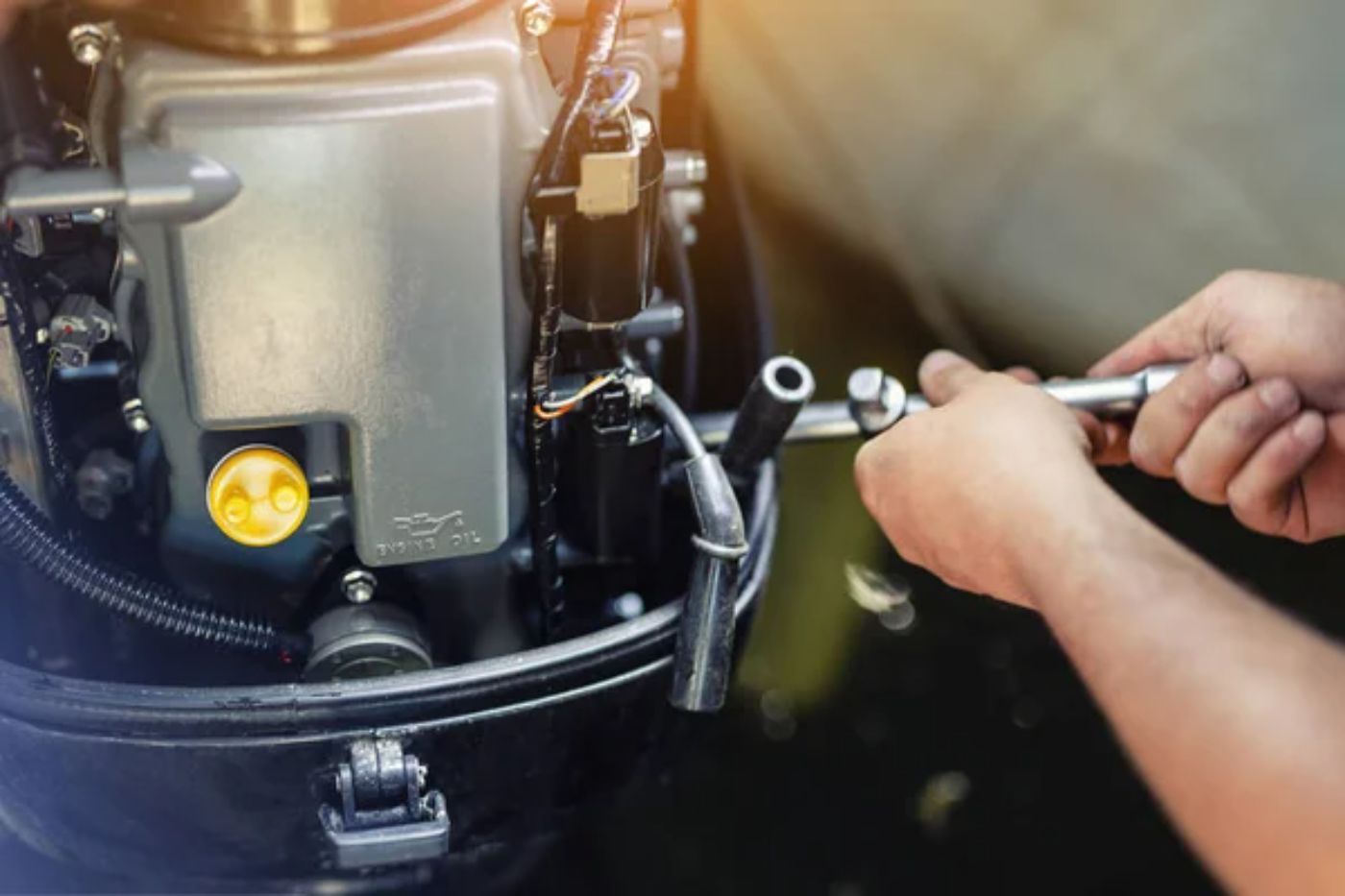
Common challenges when de-winterizing a 2-stroke motor
Fuel system issues
During winter storage, fuel can break down and leave behind deposits that can clog the fuel system. Before starting the motor, you should inspect the fuel system for any leaks, damage, or clogs. You may need to clean or replace the fuel filter, fuel lines, or carburetor.
Spark plug issues
Over time, spark plugs can become fouled or corroded, which can cause the motor to run poorly or not start at all. You should inspect the spark plug for any signs of wear or damage, and replace it if necessary.
Battery issues
If you haven't used your motor in a while, the battery may have lost its charge. You should test the battery and charge it if necessary. It's also a good idea to clean the battery terminals and check the cables for any damage.
Oil issues
During winter storage, the oil in a 2-stroke motor can become contaminated or degraded. Contamination can occur if water or other debris gets into the oil, while degradation can occur if the oil breaks down over time.
Before starting the motor, you should check the oil level and top it off if necessary. You need to use the correct type of oil for your motor, as specified in the owner's manual.
You should also inspect the oil for any signs of contamination or degradation, such as a milky appearance or a burnt smell. If the oil is contaminated or degraded, you should change it before starting the motor.
Propeller issues
A damaged or improperly installed propeller can cause the motor to run poorly or even cause damage to the motor. You should inspect the propeller for any damage or debris, and replace any damaged parts. Make sure the propeller is properly installed and balanced.
De-Winterizing Your 4-Stroke Outboard Motor
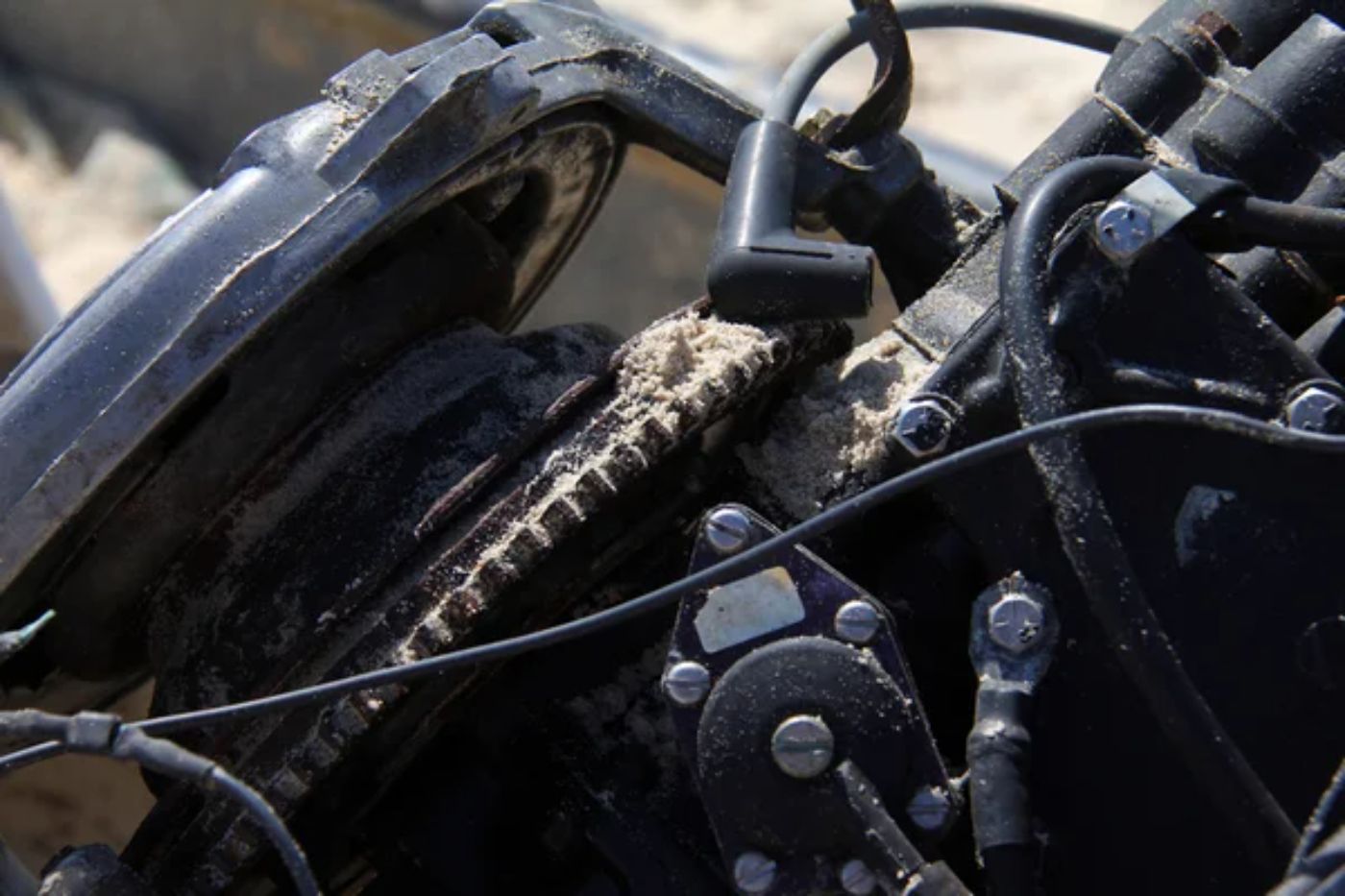
Step-by-step guide to de-winterize a 4-stroke motor
If you have a 4-stroke outboard motor, here's what you need to know to get your motor up and running again:
- Check the fuel system for any leaks or damage. Replace any damaged parts.
- Add a fuel stabilizer to the fuel tank and run the motor for a few minutes to circulate the stabilizer through the system.
- Drain the fuel tank and fuel lines completely.
- Change the oil and oil filter.
- Inspect the spark plugs and replace any that are worn or damaged.
- Inspect the cooling system for any leaks or damage. Replace any damaged parts.
- Charge the battery and reinstall it in the motor.
- Secure all electrical connections.
- Flush the motor with fresh water to remove any salt or debris.
- Cover the motor with a waterproof cover.
Common issues when de-winterizing a 4-stroke motor
Fuel-related issues
When a 4-stroke motor is stored for an extended period, the fuel in the tank can begin to break down and form deposits that can clog the fuel system. If you didn't add a fuel stabilizer to the tank before storing the motor, you may experience fuel-related problems when de-winterizing the motor.
Symptoms of fuel-related issues can include difficulty starting, rough running, or stalling. To avoid these issues, add a fuel stabilizer to the tank before storing the motor.
Battery issues
If the battery is not properly maintained over the winter, it may not hold a charge or may be damaged. Symptoms of battery issues can include difficulty starting or a weak or dead battery.
To avoid these issues, properly maintain the battery by keeping it charged and storing it in a cool, dry place.
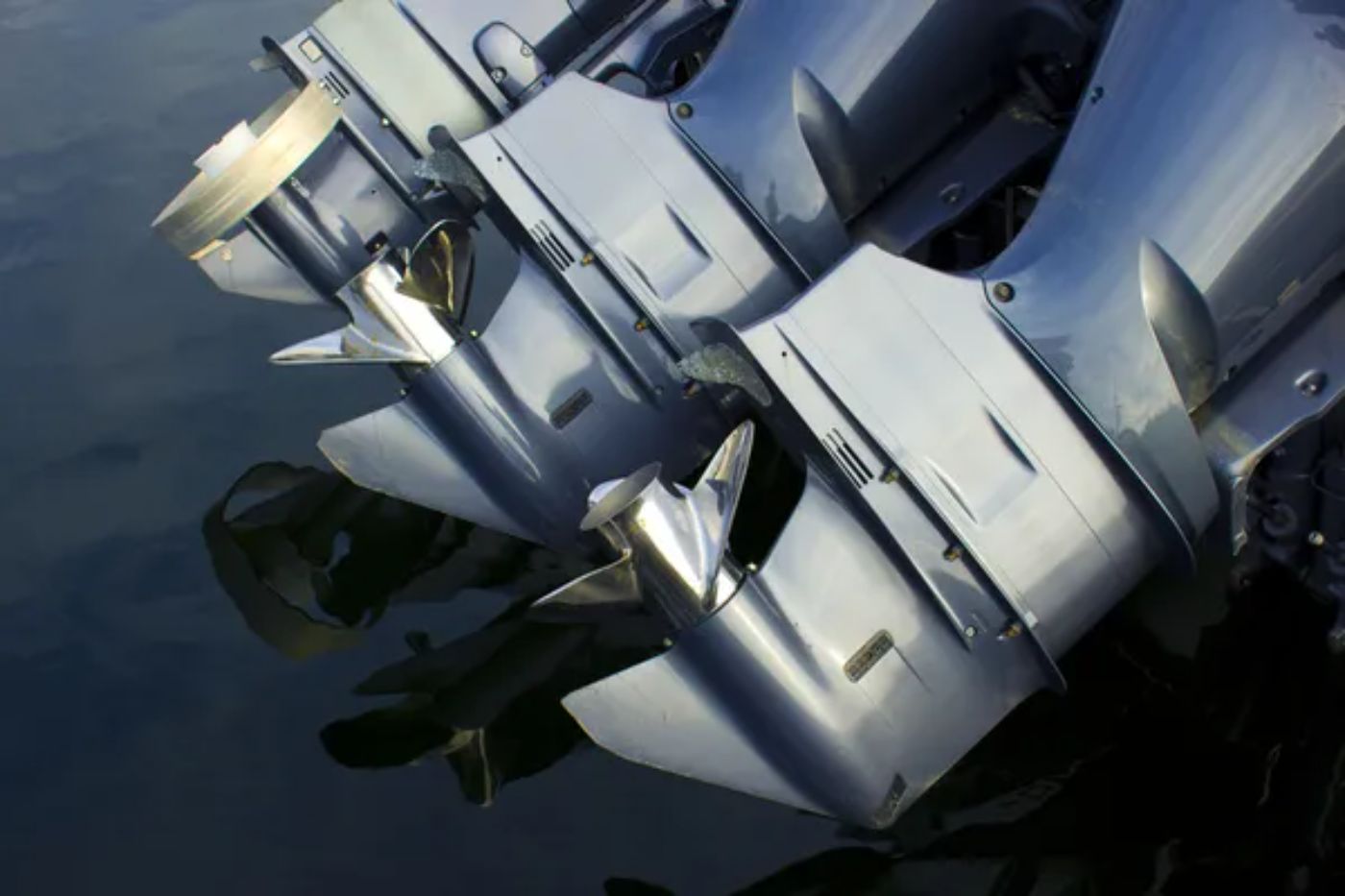
Cooling system issues
Damage to the cooling system can cause the motor to overheat and may result in costly repairs. Symptoms of cooling system issues can include overheating, loss of power, or unusual noises.
To prevent this, you need to inspect the cooling system for damage or leaks and make any necessary repairs before using the motor.
Spark plug issues
Worn or damaged spark plugs can cause the motor to run poorly or not start at all. Symptoms of spark plug issues can include difficulty starting, rough running, or misfires.
To avoid these issues, inspect the spark plugs and replace any that are worn or damaged before using the motor.
Did you find the answer to your specific question?
👍 0 👎 0
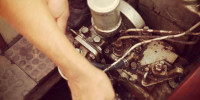


Leave a comment